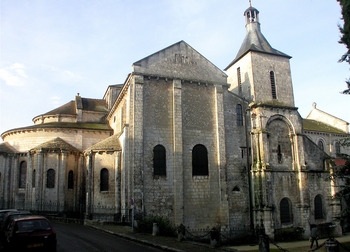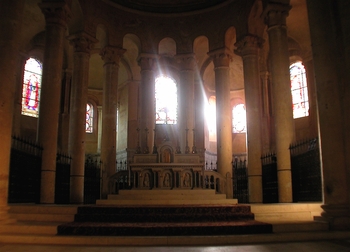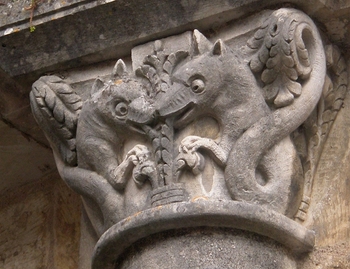


The Église St-Hilaire-le-Grand (Church of St. Hilary the Great) is one of several notable Romanesque churches in Poitiers, France. It is a World Heritage Site as part of the extension into France of the Routes to Santiago de Compostela (Spain).
The church of St-Hilaire-le-Grand was built in the 11th century over a Roman graveyard and dedicated to St. Hilary, the first bishop of Poitiers. Hilary was born into a pagan family at Poitiers and converted to Christianity after reading the Scriptures. He was appointed bishop of his city in 350 AD, after which he took up the defense of orthodox Christianity against Arianism (which held that Jesus Christ was only a man, not God-made-man).
Hilary was eventually exiled by the Arian emperor Constantius, but he continued his writing on theology (in which he encouraged a moderate approach to the Semi-Arians) and traveled to Constantinople to do further battle against error.
Hilary returned to Poitiers in 361, resumed his role as bishop, and was visited by his former disciple St. Martin of Tours. After a trip to Italy on further Arian-related business, Hilary returned again to Poitiers, where he remaind until his death in 368 AD (feast day: January 14).
Thanks to its tomb of St. Hilary, this church in Poitiers attracted many pilgrims on their way to Santiago de Compostela, who processed around the roomy ambulatory in the east end. The fate of Hilary's relics is not known for certain (the church of Puy still claims to have them), but one account says they were taken from the church of St-Hilaire and destroyed by Protestants in 1572.
A fire around 1100 destroyed the original wooden roof of the church, which was replaced with eight heavy domes. This extra weight necessitated the addition of numerous auxiliary columns, which contribute to the uniqueness of the interior.
The facade and domed aisles were severely damaged when the tower fell in 1590. The church was restored in the 19th century, during which part of the nave was trimmed off.
St Hilaire is best approached from the east, where its large Romanesque apse is surrounded by radiating chapels. Carvings can be seen in some of the blind arches, capitals and eaves of the exterior.
Inside, the church has a central nave plus three aisles on each side, supported by a forest of columns. The entrance opens into four chapels with Romanesque wall paintings, which include one of the first paintings of the Apocalypse. There are carved capitals, many still colorfully painted, in the choir.
HOME